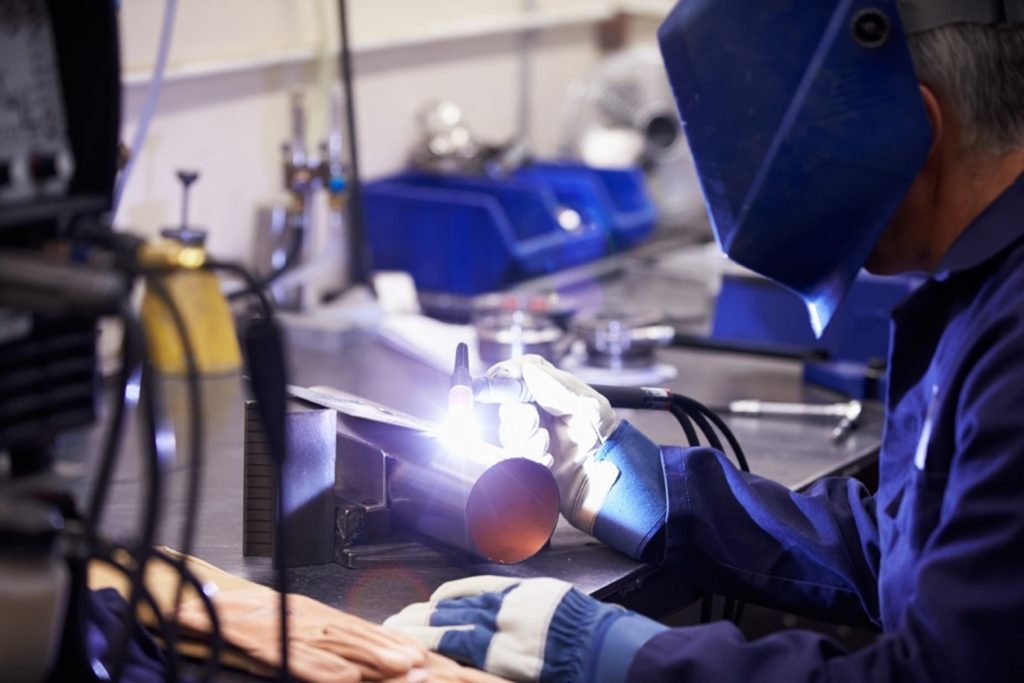Welding for Beginners: Where to Start?
Welding is not as difficult as you might think, but it does take the right tools, a bit of knowledge and some patience. At Bottle Gases, we’re taking a look at what people should know before they start welding so that they have a strong foundation from the get-go.
So, take a look at our top beginner tips and, if you want more information about welding or our welding products, don’t hesitate to get in touch.
Which Projects Do You Want to Do?
The first thing you should consider is what exactly you’re looking to do. And are you going to be welding indoors or outdoors? Which materials will you be working with? Welding takes some skill so, if you’re going to be working with hot welding guns and buying gas and metals for your project, it’s crucial that you understand what it all entails and what you need to know from the start.
Don’t be afraid to ask questions, whether of your neighbours, online community or family members – and, of course, we’re also here to help in any way we can, especially when it comes to assisting you in choosing the right materials and gas for your project.
Choose Your Welding Method
Once you have an idea of what you want to achieve, you can start thinking about the type of welding you’re looking to do. There are several different processes, and each works differently and offers a range of pros and cons, depending on what you’re working on.
To decide, consider the thickness of the metals you’ll be welding, whether it’s a big or small job, the appearance of the weld and how much budget you’re willing to spend, for example.
Electric arc welding is widely used today and refers to the process in which metal is melted through an electric arc; once the metals cool down, they become bound to one another, allowing you to create virtually anything. Two of the most common types of welding methods are MIG (metal inert gas) and TIG (tungsten inert gas) welding.
TIG is incredibly precise and requires the use of rods that fuse two pieces of metal together with an electrode that delivers the current to the welding arc. You need a protective shield for this. MIG uses a continuous feeding metal wire into the weld, which is a filler material to combine two metals together.
MIG is considered to be easier for anyone starting out, and it’s often used for home repair projects as well. So, consider learning this process before expanding your skillset into TIG, which has a bigger learning curve. We’ve written an article on “Top Tips for MIG Welding Beginners“, so be sure to check it out too.
And, if you want to learn more about these two processes, take a look at our article “What is the Difference Between TIG & MIG Welding?“
Buy the Right Equipment and Materials
Getting the right materials and equipment is just as important, and Bottle Gases is here to help. We supply a vast range of products, including TIG welding gas and MIG welding gas, as well as oxy fuel welding equipment if you’re interested in that type of welding too.
While the starting costs might look scary, it’s important to invest in good machines and materials, as this will increase the quality of your work. Cheap materials are more likely to be ineffective, meaning they’ll make learning more difficult too, so invest in quality.
Of course, it’s also important to not overpay! We’ve stricken the perfect balance, as we provide the best quality materials at great prices, so browse our shop to see for yourself. From welding machines to air compressors and industrial floor fans, we’ve got it all.

Get Protective Equipment
When welding, it’s crucial that you protect yourself against UV rays, hot metal and sparks, so get quality welding safety equipment as well, as this will make all the difference. Choose a good welding helmet to protect your face and eyes, a nice pair of gloves that protect your arms, and even flame-resistant shirts and aprons. Whatever you choose, avoid polyester materials and other similar cloths, as it can easily ignite and burn.
Preparing the Weld
Before you start, you must prepare the metals too, which includes removing all dirt, debris and grease from the materials. Then, you need to grind your edges, so that your weld is smooth and there’s enough space for the filler – this also helps to ensure the integrity of the weld itself.
Other Tips
There are many other things you should know about before starting your welding journey, including:
- Before welding, get a feel for the rhythm, the distance and the movements you need to make a weld; practice all this before getting into it.
- Have a dedicated space with good ventilation for your work.
- A sturdy workbench is crucial to ensure you can produce good work.
- If you’re MIG welding, make sure you have good quality welding wire, which can give you a consistent arc.
- Use both hands when MIG welding, to ensure the stability of the gun.
- When TIG welding, the angle of the torch should be between 15 to 20 degrees away from the metal.
At Bottle Gases, we have everything you could possibly need to weld and more, so don’t hesitate to get in touch with us today – we’ll answer any questions you may have and will be happy to help you choose the right equipment or materials for your project.




